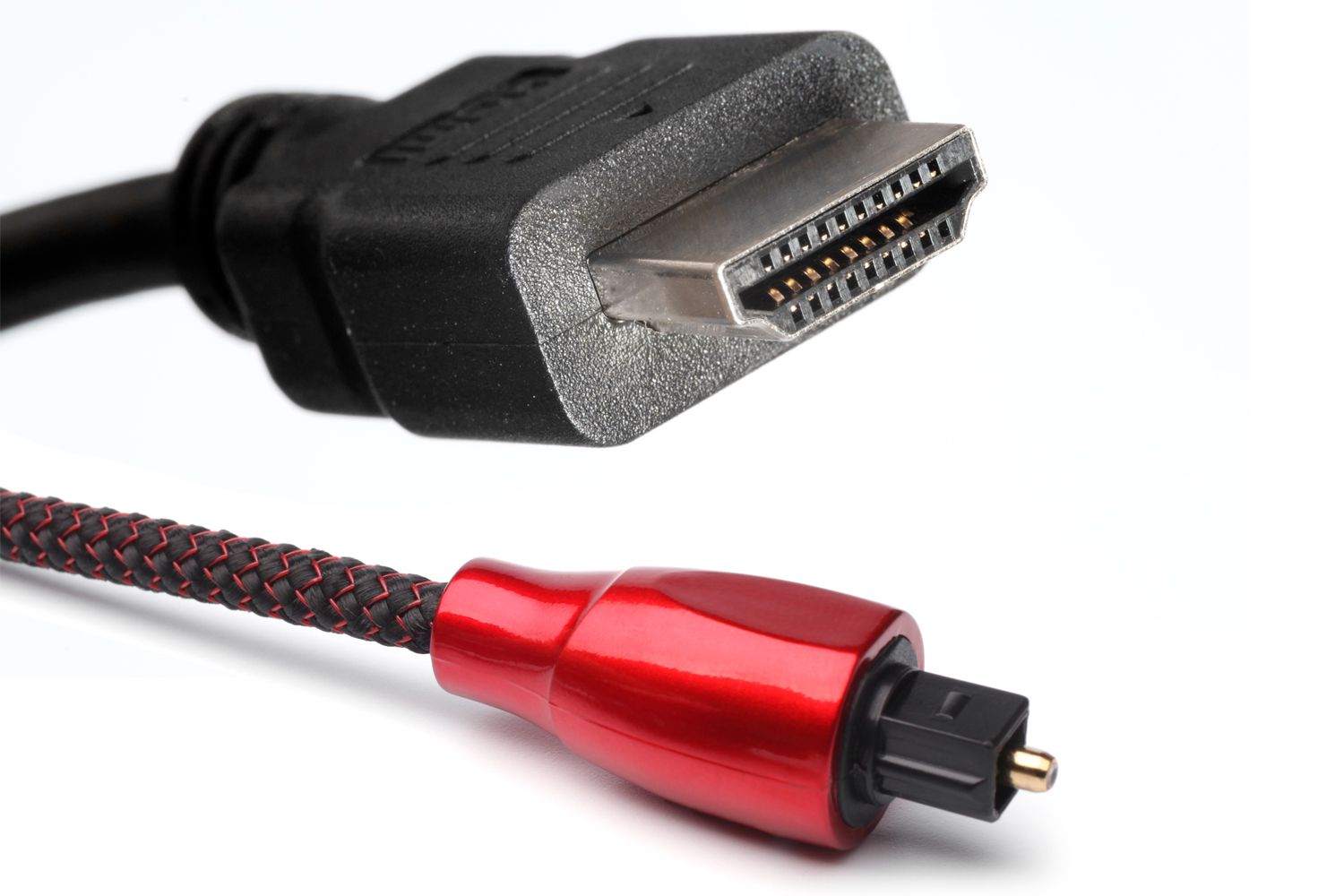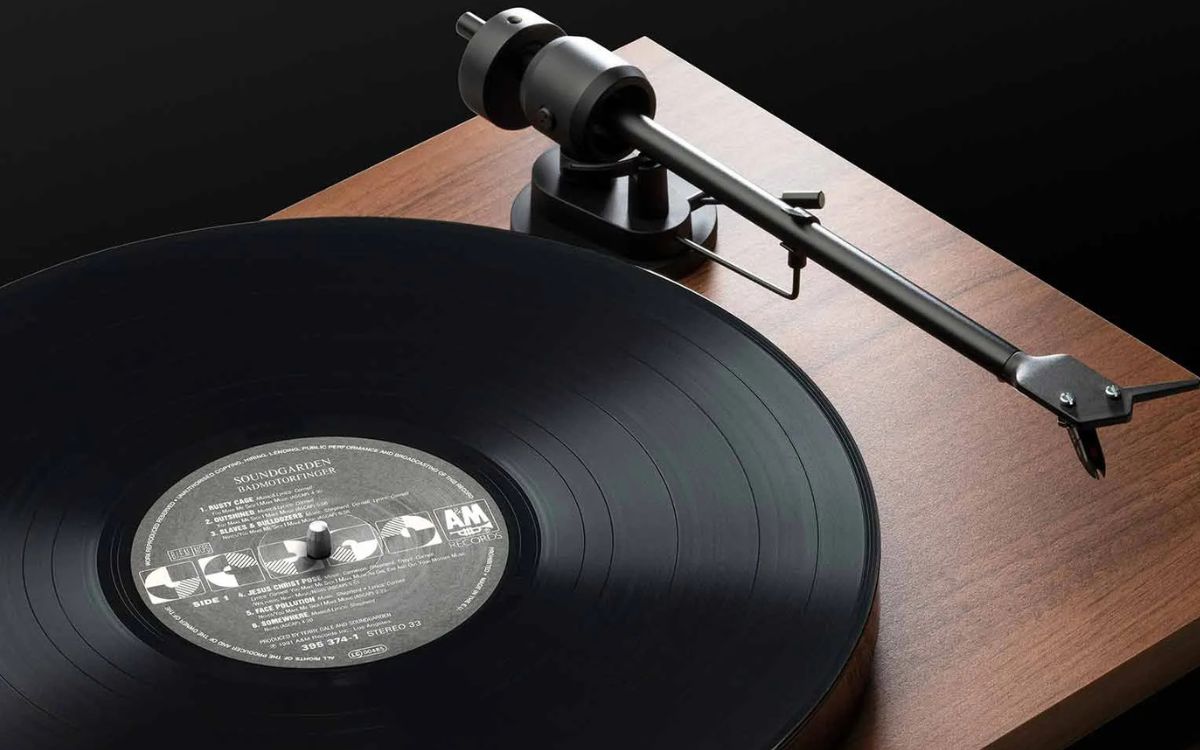Home>Production & Technology>Stereo>Which Is Better Stereo Or Joint-Stereo


Stereo
Which Is Better Stereo Or Joint-Stereo
Modified: January 22, 2024
Discover the best audio experience with stereo and joint-stereo. Explore the differences, benefits, and choose the right option for your music preferences.
(Many of the links in this article redirect to a specific reviewed product. Your purchase of these products through affiliate links helps to generate commission for AudioLover.com, at no extra cost. Learn more)
Table of Contents
Introduction
When it comes to audio, there are various techniques and technologies used to create a rich and immersive sound experience. Two commonly used techniques are stereo and joint-stereo audio. Both aim to enhance the quality and spatial perception of sound, but they differ in their approach and implementation.
Stereo audio is a method of recording and reproducing sound that utilizes two audio channels, typically labeled as “left” and “right.” The goal of stereo audio is to create a sense of depth and dimensionality by capturing and playing back sound from different directions. This technique has been widely used in various audio applications, such as music production, film soundtracks, and gaming.
On the other hand, joint-stereo audio is an advanced technique that aims to optimize audio compression and reduce file size while maintaining a high level of audio quality. It achieves this by combining common elements of audio between two channels, allowing for more efficient coding and storage. Joint-stereo is commonly used in audio encoding formats such as MP3 and AAC.
In this article, we will delve deeper into the differences between stereo and joint-stereo audio, explore the benefits of each, and guide you on factors to consider when choosing between the two techniques. By the end, you will have a clear understanding of which approach is better suited to your specific audio needs.
Definition of Stereo Audio
Stereo audio, also known as stereophonic sound, is a technique that uses two audio channels to create a sense of depth and spatial perception in sound reproduction. It is based on the principle that our ears perceive sound from different directions, allowing us to locate the source of a sound.
In stereo audio, the sound is divided into two distinct channels: the left channel and the right channel. Each channel carries a slightly different portion of the audio signal, simulating the way our ears receive sound in the real world. When played back through a stereo system, these channels are combined to create a three-dimensional audio experience.
The left channel carries the audio information that is perceived as coming from the left side, while the right channel carries the audio information that is perceived as coming from the right side. By manipulating the volume, timing, and phase of the audio signals in each channel, stereo audio systems create the illusion of sound moving across the soundstage, providing a natural and immersive listening experience.
Stereo audio is widely used in various applications, including music production, film soundtracks, and home theater systems. It allows for the localization of instruments and sound effects, enhancing the realism and impact of the audio. With a well-designed stereo setup, listeners can perceive sounds coming from specific directions, adding depth and dimension to the audio content.
One of the key advantages of stereo audio is its compatibility with a wide range of playback systems. Whether you are listening through speakers, headphones, or car audio systems, stereo audio is a standard format that can be enjoyed across different devices. Additionally, many music albums and recordings are mixed and mastered in stereo, ensuring a consistent listening experience across platforms.
Overall, stereo audio offers an immersive and realistic sound experience, making it a popular choice for various audio applications. Whether you’re enjoying music, watching movies, or playing video games, stereo audio enhances the enjoyment and engagement of the content, bringing it to life in a way that mono audio cannot.
Definition of Joint-Stereo Audio
Joint-stereo audio is an advanced audio encoding technique that aims to optimize audio compression and reduce file size while maintaining a high level of audio quality. It achieves this by combining common elements of audio between two channels, allowing for more efficient coding and storage.
In joint-stereo audio, instead of having completely separate channels like in traditional stereo, certain elements of the audio signal are shared between the left and right channels. This means that instead of encoding two independent channels, joint-stereo encoders identify and exploit similarities in the audio signal to reduce redundancy.
This technique is often used in audio encoding formats such as MP3 and AAC. By reducing redundancy, joint-stereo encoding can significantly reduce the file size of audio files without sacrificing audio quality. This is particularly beneficial for applications where storage or bandwidth is limited, such as when streaming audio over the internet or storing music on portable devices.
Joint-stereo encoding works by analyzing the audio signal to identify portions that are similar or identical in both the left and right channels. Common elements, such as the center-panned vocals or instruments, are encoded once and then shared between both channels. The audio encoder utilizes psychoacoustic models to determine which elements can be shared without perceptible loss in audio quality.
While joint-stereo encoding reduces redundancy and file size, it is important to note that it can introduce some audio artifacts or distortions, especially when aggressive compression settings are used. These artifacts are often subtle and may not be noticeable to the casual listener, but they can affect the overall audio quality.
Despite the potential for artifacts, joint-stereo audio is widely used in many audio encoding formats due to its benefits in efficient audio compression. It allows for smaller file sizes without compromising perceived audio quality, making it ideal for applications where efficient storage or transmission is a priority.
Overall, joint-stereo audio is a technique that balances the need for audio quality and file size efficiency. By capitalizing on similarities in the audio signal, joint-stereo encoding offers a practical solution for reducing file size while still providing a satisfactory listening experience.
Differences between Stereo and Joint-Stereo
Stereo audio and joint-stereo audio are two different approaches to achieving a spatial and immersive audio experience. While both techniques aim to enhance the quality of sound reproduction, there are some notable differences between stereo and joint-stereo:
Spatial Perception:
Stereo audio creates a sense of spatial perception by manipulating the volume, timing, and phase of the audio signals in each channel. It provides a wide soundstage and allows for the localization of instruments and sound effects. Joint-stereo audio, on the other hand, focuses more on efficient audio compression and file size reduction. It achieves this by sharing common elements between channels, which can impact the perception of sound localization and spatial cues.
Audio Quality:
Stereo audio is designed to provide a high-quality listening experience with a focus on accuracy and realism. By maintaining separate channels for left and right audio, it offers a clean and precise representation of the original recording. Joint-stereo audio, due to its compression-focused approach, can introduce some audio artifacts or distortions, particularly when aggressive compression settings are used. While these artifacts are often subtle and may not be noticeable to the average listener, they can affect the overall audio quality.
File Size and Compression:
A significant advantage of joint-stereo audio is its ability to reduce file size while maintaining acceptable audio quality. By identifying and encoding shared elements of the audio signal, joint-stereo encoding achieves efficient compression, making it ideal for applications where storage or bandwidth limitations are a concern. Stereo audio, on the other hand, typically requires more storage space than joint-stereo due to the need for separate channels for left and right audio.
Compatibility and Usage:
Stereo audio is widely supported by various playback systems and devices, making it a standard format for music production, film soundtracks, and gaming. It offers a consistent listening experience across different devices and platforms. Joint-stereo audio is commonly used in audio encoding formats such as MP3 and AAC, making it suitable for applications where efficient storage or transmission is required, such as streaming audio over the internet or storing music on portable devices.
In summary, stereo audio and joint-stereo audio have different approaches and priorities. Stereo focuses on spatial perception and audio quality, while joint-stereo prioritizes file size efficiency and compression. The choice between stereo and joint-stereo depends on the specific requirements and priorities of the audio application.
Benefits of Stereo Audio
Stereo audio offers several key benefits that make it a popular choice for various audio applications:
Immersive Sound Experience:
One of the main advantages of stereo audio is its ability to create an immersive sound experience. By utilizing two audio channels, stereo audio can simulate the way we perceive sound in the real world. It provides a sense of depth and spatial perception, allowing listeners to localize instruments and sound effects, and creating a more engaging and realistic audio environment.
Enhanced Soundstage:
Stereo audio provides a wide soundstage, which refers to the perceived width and depth of the audio image. This allows for a more accurate placement of instruments and sound sources within the mix. By positioning audio elements in different locations across the soundstage, stereo audio offers a more dynamic and enveloping listening experience.
Accurate Localization:
With stereo audio, listeners can accurately localize sounds and perceive their direction. By manipulating the volume, timing, and phase of the audio signals in each channel, stereo audio systems create the illusion of sound moving across the soundstage. This accurate localization enhances the realism of the audio and adds depth and dimension to the listening experience.
Compatibility and Standardization:
Stereo audio is a widely supported format across various playback systems and devices. It has become a standard in music production, film soundtracks, and gaming, ensuring compatibility and consistent playback across different platforms. Whether you are listening through speakers, headphones, or car audio systems, stereo audio delivers a consistent and enjoyable listening experience.
Wide Availability of Content:
There is a vast library of stereo audio content available, ranging from music albums to movies and video games. Stereo audio has been a standard for many years, resulting in an extensive and diverse collection of content that can be enjoyed with a stereo system. This wide availability ensures that you can find and enjoy a wide range of audio content in stereo format.
Overall, stereo audio provides an immersive, accurate, and enjoyable sound experience. It allows for precise placement of audio elements, enhances the spatial perception of sound, and offers compatibility and availability across various platforms. Whether you are a music enthusiast, a movie lover, or a gamer, stereo audio is a reliable and widely used approach to enhance your audio experience.
Benefits of Joint-Stereo Audio
Joint-stereo audio offers several advantages in terms of audio compression and file size efficiency, which make it a beneficial approach for certain applications:
Reduced File Size:
The main benefit of joint-stereo audio is its ability to significantly reduce file size compared to traditional stereo encoding. By identifying and encoding shared elements between the left and right channels, joint-stereo encoding eliminates redundancy and achieves more efficient compression. This reduction in file size is particularly advantageous for applications where storage or bandwidth limitations are a concern, such as streaming audio over the internet or storing music on portable devices.
Acceptable Audio Quality:
Despite the focus on file size reduction, joint-stereo audio maintains an acceptable level of audio quality. By utilizing psychoacoustic models and taking advantage of similarities in the audio signal, joint-stereo encoders can reduce redundancy without introducing noticeable artifacts. While there may be a slight compromise in audio quality compared to traditional stereo, the difference is often subtle and may not be noticeable to the average listener.
Efficient Encoding and Decoding:
Joint-stereo audio encoding and decoding processes are computationally efficient. The shared elements between channels simplify the encoding process, making it faster and requiring fewer computational resources compared to separate stereo encoding. This efficiency can be beneficial for real-time encoding, streaming, or processing large batches of audio files.
Compatible with Stereo Playback:
Joint-stereo audio is designed to be backward compatible with stereo playback systems. Most modern audio players and devices can still decode and play joint-stereo encoded files as regular stereo audio. This compatibility ensures that joint-stereo-encoded content can be enjoyed on a wide range of devices without any issues.
Balance between Compression and Quality:
Joint-stereo audio strikes a balance between audio compression and quality. While it may not offer the same level of audio fidelity as stereo audio, it provides an efficient compromise, especially for applications where file size reduction is a priority. The benefits of reduced file size and acceptable audio quality make joint-stereo audio a suitable choice for scenarios where efficient storage or transmission is necessary.
In summary, joint-stereo audio offers significant advantages in terms of reduced file size, acceptable audio quality, efficient encoding and decoding, compatibility with stereo playback systems, and a balance between compression and quality. These benefits make it a valuable technique for applications that require efficient audio compression without sacrificing a satisfactory listening experience.
Factors to Consider when Choosing between Stereo and Joint-Stereo
When deciding between stereo and joint-stereo audio, it’s important to consider several factors that can influence your choice. These factors will help determine which technique is better suited to your specific audio needs:
Audio Quality:
If maintaining the highest audio quality is your top priority, stereo audio is likely the better choice. Stereo audio provides a more accurate and immersive sound experience by preserving the individual channels and spatial perception. On the other hand, if audio quality is not the primary concern and file size efficiency is more important, joint-stereo audio can sufficiently meet your needs.
File Size and Storage:
If you have limited storage space or need to conserve bandwidth for streaming purposes, joint-stereo audio offers a significant advantage. By reducing file size through efficient compression, joint-stereo allows you to store more audio files or transmit them more quickly. Stereo audio, on the other hand, requires more storage space due to the separate channels for left and right audio.
Application and Playback Systems:
Consider the specific application and playback systems you will be using. Stereo audio is a widely supported format and offers compatibility with various playback systems and devices. It remains the standard choice for music production, film soundtracks, and gaming. However, joint-stereo audio is compatible with stereo playback systems and can be played on most modern devices, making it suitable for cases where file size efficiency is a priority.
Listener Preferences:
Consider the preferences of your intended audience or the listeners. Some individuals may have a preference for the immersive sound experience that stereo audio provides, appreciating the accurate localization and spatial cues. Others may not be as discerning or may prioritize efficient file size. Understanding the preferences of your audience can help guide your decision between stereo and joint-stereo audio.
Content Type:
The type of content you are working with can also influence your choice. If you are working with music that relies heavily on stereo imaging and spatial effects, stereo audio may be the better option. On the other hand, for spoken word content or applications where the emphasis is on efficient compression rather than spatial perception, joint-stereo audio can be a suitable choice.
By considering these factors – audio quality, file size and storage, application and playback systems, listener preferences, and content type – you can make a more informed decision when choosing between stereo and joint-stereo audio. It ultimately depends on your specific requirements and priorities, striking the right balance between sound quality and file size efficiency.
Conclusion
Both stereo audio and joint-stereo audio offer unique benefits and have their own applications in the audio world. Understanding the differences between the two techniques can help you make an informed decision based on your specific needs and priorities.
Stereo audio provides an immersive and realistic sound experience, with accurate localization and a wide soundstage. It is ideal for music production, film soundtracks, and gaming, where spatial perception and audio fidelity are critical. Stereo audio offers compatibility with a wide range of playback systems and devices, ensuring a consistent and enjoyable listening experience.
Joint-stereo audio, on the other hand, focuses on efficient audio compression and reduced file sizes. By sharing common elements between channels, joint-stereo encoding significantly reduces file size without sacrificing acceptable audio quality. This makes it ideal for applications where storage or bandwidth limitations exist, such as streaming audio over the internet or storing music on portable devices.
When choosing between stereo and joint-stereo audio, consider factors such as audio quality, file size and storage requirements, compatibility with playback systems, listener preferences, and content type. Assess the trade-offs between sound accuracy and efficiency, and align your decision with the specific needs of your audio project or application.
In the end, the choice between stereo and joint-stereo audio depends on striking a balance between audio quality, file size efficiency, and the specific requirements of your project. Understanding the strengths and limitations of each technique empowers you to make an informed decision and achieve the desired audio outcome.
Regardless of your choice, both stereo and joint-stereo audio techniques contribute to enriching our audio experiences, whether it’s through immersive soundscapes or efficient storage and transmission. Embrace the advantages of each technique to elevate your audio production, enhance your listening enjoyment, and captivate your audience with high-quality sound.











